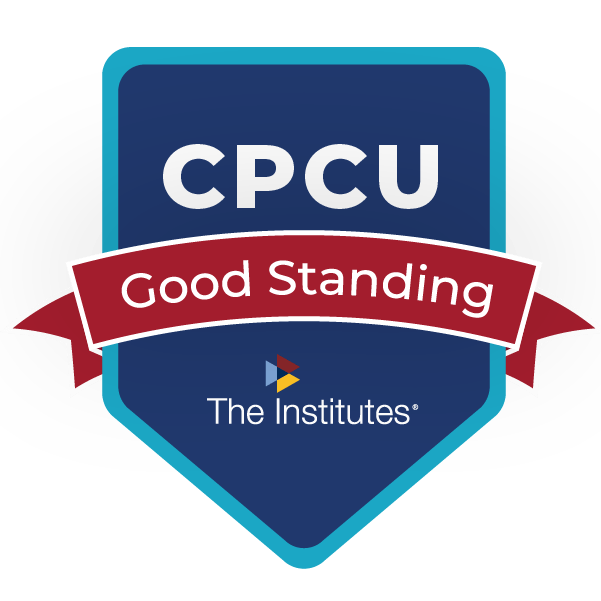Structured Settlements: Fatalities
Second in a series of blog posts dedicated to helping clients decide when a structured settlement should be considered

Today’s Installment: Fatalities
May 7, 2019 – “Death is a crisis that all families encounter, and it is recognized as the most stressful life event families face . . .”
The preceding quote was excerpted from Chapter 4, “Death, Dying, and Grief in Families” (Murray, Toth & Clinkenbeard, 2005), of Families & Change: Coping with Stressful Events and Transitions, a best-selling text of compilation scholarly research on a topic most of us would sooner avoid.
No death can be minimized, but the unexpected, sudden death of a loved one leaves families feeling especially violated as they struggle for comfort that is too slow in arriving and acceptance of a new reality they never asked for.
The ensuing grief takes a significant emotional toll on psyches and many families fracture to the point of permanent dysfunction as a result.
When survivors file insurance claims and wrongful death lawsuits due to negligence alleged to have caused a fatality, they experience a new set of stressors inherent in the litigation process which can prolong their suffering and worsen their already-fragile sense of being.
And that’s just the emotional toll.
Posted: May 7, 2019 | Category: Articles, Blog, Structured Settlements | Tags: auto accidents, litigation, structured settlement, structured settlements, wrongful death | Comments Off on Structured Settlements: Fatalities
Structured Settlements: Minors
First in a series of blog posts dedicated to helping clients decide when a structured settlement should be considered

Today’s Installment: Minors
May 1, 2019 – I once had a plaintiff attorney tell me he hated structured settlements “except for minors.”
“It’s the only way I can get a judge to grant my petitions,” he explained.
Judges had rejected some of his earlier petitions where there was no plan for the minor beyond a single lump sum payable at age 18 from a low interest-bearing blocked bank account.
He wasn’t wrong. While jurisdictions vary, generally courts prefer structured settlements to blocked accounts for a few reasons:
Posted: May 1, 2019 | Category: Articles, Blog, Structured Settlements | Comments Off on Structured Settlements: Minors
The Illogic of Annuity Trashers
 April 29, 2019 – Articles, commercials and opinions of those who trash annuities shouldn’t bother me as much they do.
April 29, 2019 – Articles, commercials and opinions of those who trash annuities shouldn’t bother me as much they do.
But seeing the general public constantly bombarded with misleading information on the issue, I can’t help wondering how many people are swayed by them to their detriment.
And feeling angry about the disingenuous and self-serving prejudice.
People aren’t always conscious of it, but they often base their financial decisions on emotion rather than logic. Fearmongers who play to this behavioral science truism can sway the odds in their favor when it comes to issuing financial advice.
And the slant is very transparent when you take the time to logically dissect their rationale for advising against annuities.
For instance, allow me to pick apart some of the more obvious biases in “Why annuities are a bad idea for almost everyone” from the August 18 issue of MarketWatch (free subscription may be required):
Posted: April 29, 2019 | Category: Articles, Blog, Retirement, Structured Settlements | Comments Off on The Illogic of Annuity Trashers
Ignore Medicare in Liability Settlements at Your Own Peril
April 5, 2019 – Since its passage in 1980, the Medicare Secondary Payer Act has been largely ignored by the personal injury litigation community. But like the person who continues to drive under the influence of alcohol rationalizing they’ve never been caught, it’s unwise to continue depending on luck to avoid adverse consequences of failure to comply with the law.
A Maryland law firm recently learned a valuable (and expensive) lesson on the imprudence of failure to consider Medicare’s interests when settling personal injury lawsuits.
According to a press release issued by the United States Department of Justice, District of Maryland, Meyers, Rodbell & Rosenbaum, P.A. entered into a $250,000 settlement with the government because they “failed to reimburse the United States for certain Medicare payments made to medical providers on behalf of a firm client.”
This announcement serves as a reminder to ALL law firms, plaintiff and defense alike, of the importance of taking Medicare’s interests into account when resolving lawsuits.
Posted: April 5, 2019 | Category: Articles, Blog, Structured Settlements | Comments Off on Ignore Medicare in Liability Settlements at Your Own Peril
Life Company Videos
April 2, 2019 – To help spread the good word about structured settlements, several of our life company partners have recently unveiled some professional videos designed to help clients better understand this dynamic claims resolution tool.
In no particular order, here are links to some of these videos designed to enlighten you:
About Structured Settlements – From Prudential Structured Settlements, this is a general information video focusing on the financial security that comes with structuring one’s settlement and describes how they work.
What Are the Rules & Requirements for a Non-Qualified Assignment? – From MetLife, this video features MetLife Structured Settlement Leadership describing the unique features of this product used for taxable settlements, and the requirements needed to implement them.
Why Do I Need a Structured Settlement? – From Pacific Life, this one’s been out for a little longer but worth re-sharing since it emphasizes the importance of making the right decision when one’s personal injury claim concludes.
Posted: April 2, 2019 | Category: Articles, Blog, Structured Settlements | Comments Off on Life Company Videos
Financial Strength of Structured Settlement Markets
 November 1, 2018 – The 2018 edition of “Understanding the Insurance Industry,” a supplement to the November issue of Best Review, identifies the Top 10 U.S. Life/Health Companies ranked by 2017 Capital and Surplus, along with other rankings.
November 1, 2018 – The 2018 edition of “Understanding the Insurance Industry,” a supplement to the November issue of Best Review, identifies the Top 10 U.S. Life/Health Companies ranked by 2017 Capital and Surplus, along with other rankings.
Best Review is a publication of the A.M. Best Company, “the only global credit rating agency with a unique focus on the insurance industry.”
Five of the nine life companies we’re proud to represent and offering structured settlements either directly or through their affiliates, are included in this ranking and are listed below by rank and capital surplus statistics:
3rd – New York Life – $20,356,950,000
4th – Metropolitan Life & Affiliated Companies – $18,715,087,000
5th – Prudential of America Group – $18,007,199,000
7th – AIG Life & Retirement Group – $12,148,776,000
10th – Pacific Life Group – $9,312,882,000
Capital and Surplus equals a company’s assets minus its liabilities.
The life insurance industry is generally one of the most solvent of all industries due in large part to the actuarial predictability of outcomes of life insurance contracts. By insuring large numbers of people, incorrect mortality assumptions are more easily offset by those risks which exceed mortality expectations allowing the company to operate profitably while meeting its financial responsibilities to policyholders.
Posted: November 1, 2018 | Category: Articles, Blog, Structured Settlements | Comments Off on Financial Strength of Structured Settlement Markets
Fixed Indexed Annuities On Fire
September 24, 2018 – If you still believe that guy on the radio castigating you to hate annuities, it might be worth seeing what the top industry research association’s statistics reveal about 2018 YTD fixed indexed annuities (FIAs).
 Hint: They’re HOT!
Hint: They’re HOT!
Through the first half of 2018, $32.1 billion worth of fixed indexed annuity purchases were made according to LIMRA Secure Retirement Institute. That’s up 14 percent from 2017 and its $17.6 for the quarter is an all–time high.
Compared to the $30 trillion market capitalization of the U.S. stock market, this is a drop in the bucket. But for an idea hatched just 23 years ago, fixed indexed annuities are making some important strides as people seek a reasonable blend of security and return for their money.
Besides, unlike the stock market, FIAs never lose money.
Fixed indexed annuities offer investors a simple proposition: In exchange for money today, you receive two promises:
You will never lose money; and,
You will receive guaranteed future income FOR LIFE, the value of which will be determined by the investment experience of the selected index and the timing of your withdrawal.
Admittedly, the nuances of the various life market offerings and index choices can be daunting. But millions of individuals have benefited from the peace of mind that comes with guaranteed lifetime income without fear of market downturns.
Posted: September 24, 2018 | Category: Articles, Blog, Retirement, Structured Settlements | Comments Off on Fixed Indexed Annuities On Fire
The Sultan of Annuities
 September 17, 2018 – The Los Angeles Angels have been officially eliminated from the 2018 postseason.
September 17, 2018 – The Los Angeles Angels have been officially eliminated from the 2018 postseason.
Drat!
The year started with such promise, too. Not only do we have a perennial MVP candidate in Mike Trout, but this year brought some new excitement when the Angels signed Japanese phenom Shohei Ohtani, a young player who is making comparisons to Babe Ruth for his ability to hit AND pitch at the highest possible level in professional baseball – a feat nobody has been able to successfully accomplish in over 100 years.
George Herman “Babe” Ruth – the Sultan of Swat – was a larger-than-life celebrity who, during his era, had no equal in terms of popularity. Idolized by kids and frustrating opposing teams, he lived life to the fullest known almost as much for his excess on the party circuit as he was for his prowess on the baseball diamond.
Despite this tendency toward extravagance, however, Babe was not a big risk taker when it came to money. Early in his career, he was introduced to the concept of annuities by a player on an opposing team and he was an immediate convert to the concept.
Posted: September 17, 2018 | Category: Articles, Blog, Retirement, Structured Settlements | Comments Off on The Sultan of Annuities
Harvesting the Bull
August 23, 2018 – As the current stock market is busy toasting itself for the longest bull run in history, at least one chief investment officer is keeping his bubbly on ice while cautioning investors about a market he believes is on a “collision course with disaster.”
Guggenheim chief investment officer Scott Minerd sounded two dire warnings over the past four months:
 April 4, 2018 – “Guggenheim investment chief sees a recession and a 40% plunge in stocks ahead.”
April 4, 2018 – “Guggenheim investment chief sees a recession and a 40% plunge in stocks ahead.”
August 15, 2018 – “‘If there were ever a moment to harvest gains . . . it is August 2018,’ warns Guggenheim’s Minerd.”
Many of us not-so-fondly remember the last 40% drop in the stock market way back in 2009. Minerd wonders aloud if investors have become lulled into a false sense of complacency since then.
Recession? 40% plunge? Who’s got the stomach for that again?
Posted: August 23, 2018 | Category: Articles, Blog, Retirement, Structured Settlements | Comments Off on Harvesting the Bull
Dewayne Johnson v. Monsanto Company Tax Surprise
August 13, 2018 – The “Tax Cuts and Jobs Act” presumably did not factor into a San Francisco jury’s decision last week to award Dewayne Johnson $289.2 million in his lawsuit against Monsanto Company, et al. His case is potentially affected by it nonetheless.
In addition to $39.2 million in compensatory damages awarded to the former Benicia Unified School District groundskeeper who claimed years of exposure to the herbicide Roundup caused him to develop non-Hodgkin lymphoma, the jury tagged on $250 million in punitive damages against defendant Monsanto for failing to warn users about the dangers of their popular product.
With more than 4,000 people waiting in the wings to have their similarly-styled lawsuits heard, the implications of this verdict are far reaching. Even though an appeal is anticipated, the significance of this bellwether case cannot be understated.
Let’s assume for an unlikely moment the verdict is not appealed and no post-verdict settlement discussions occur. Despite the best intentions of the jury to properly compensate Mr. Johnson for his suffering and punish Monsanto for its maliciousness, the ultimate beneficiary of this outcome is, strangely enough, the U.S. taxpayers thanks to Congress’ recently passed legislation.
Posted: August 13, 2018 | Category: Articles, Blog, Structured Settlements | Comments Off on Dewayne Johnson v. Monsanto Company Tax Surprise



















